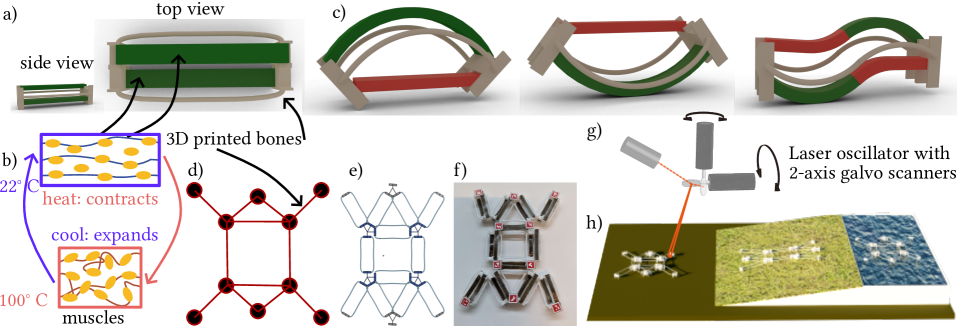ETH AI Digest: #19
SGD handles heavy-tailed noise, wireless shape-shifting robots, and wearable AI detects dangerous blood pressure spikes
In this week's digest:
Vanilla SGD Handles Heavy-Tailed Noise — Standard gradient descent achieves optimal convergence rates with unbounded variance, challenging the need for complex adaptive methods
Nature-Inspired Modular Robots — 3D-printed skeletal systems with wireless muscle control enable shape-shifting robots that navigate multiple terrains autonomously
Life-Saving Wearable AI Detection — Machine learning with multimodal sensors detects dangerous blood pressure spikes in spinal cord injury patients with 77% accuracy
Selected Papers of the Week
1. Can SGD Handle Heavy-Tailed Noise?
Vanilla SGD achieves optimal convergence rates with heavy-tailed noise, challenging the need for adaptive methods.
✍️ Authors: Ilyas Fatkhullin, Florian Hübler, Guanghui Lan
🏛️ Lab: Optimization & Decision Intelligence Group
⚡ Summary
This paper investigates whether standard Stochastic Gradient Descent (SGD) can succeed under heavy-tailed noise conditions where gradient variance may be unbounded.
The authors prove that vanilla SGD achieves minimax optimal convergence rates in convex and strongly convex settings, and tight algorithm-specific bounds in non-convex cases, requiring only bounded p-th moments for p ∈ (1, 2].
These theoretical guarantees challenge the prevailing view that heavy-tailed noise necessitates adaptive methods like gradient clipping or normalization.
Experiments confirm the theory, showing SGD can be competitive with or even outperform more complex adaptive methods in certain regimes.
2. Computational Design and Fabrication of Modular Robots with Untethered Control
Building nature-inspired robots with 3D-printed bones and wireless muscles that shape-shift and navigate terrains.

✍️ Authors: Manas Bhargava, Takefumi Hiraki, Malina Strugaru, Michal Piovarci, Chiara Daraio, Daisuke Iwai, Bernd Bickel
🏛️ Lab: Computational Design Laboratory
⚡ Summary
Researchers have developed a framework for creating soft robots that mimic natural organisms using modular building blocks of 3D-printed bones and infrared-activated artificial muscles.
Their system enables wireless control through laser heating, allowing robots to perform complex shape morphing and navigate multiple terrains without physical connections to control systems.
Computational design tools optimize both skeletal structure and control strategies, enabling robots to transform from flat sheets into 3D shapes or navigate across land and water.
This approach brings robotic capabilities closer to living organisms by combining modular design, distributed actuation, and wireless control.
3. Detection of Autonomic Dysreflexia in Individuals With Spinal Cord Injury Using Multimodal Wearable Sensors
Machine learning with wearable sensors enables early detection of life-threatening blood pressure events in spinal cord injury.

✍️ Authors: Bertram Fuchs, Mehdi Ejtehadi, Ana Cisnal, Jürgen Pannek, Anke Scheel-Sailer, Robert Riener, Inge Eriks-Hoogland, Diego Paez-Granados
🏛️ Lab: Spinal Cord Injury & Artificial Intelligence Lab
⚡ Summary
Autonomic Dysreflexia causes dangerous blood pressure spikes in spinal cord injury patients that can lead to stroke or death if undetected.
Researchers developed the first validated non-invasive detection system using multiple wearable sensors and machine learning.
Their ensemble approach achieved high accuracy (F1=0.77), with heart rate and ECG signals proving most informative for detecting these episodes.
This breakthrough could enable continuous monitoring outside clinical settings, potentially saving lives through earlier intervention.
Other noteworthy articles
The Non-Linear Representation Dilemma: Is Causal Abstraction Enough for Mechanistic Interpretability? When any model can map to any algorithm
Accurate and Consistent Graph Model Generation from Text with Large Language Models: AbsCon: Combining multiple LLM outputs into consistent graph models using constraint optimization



